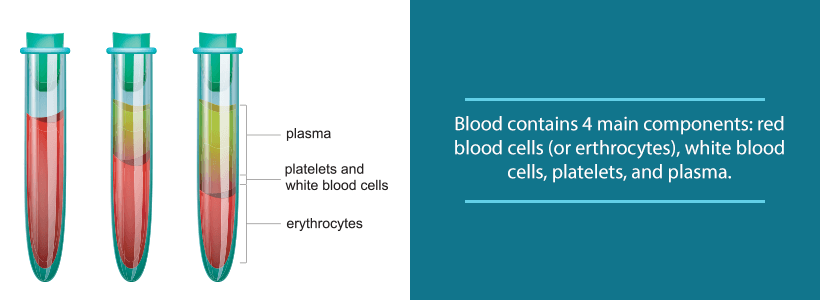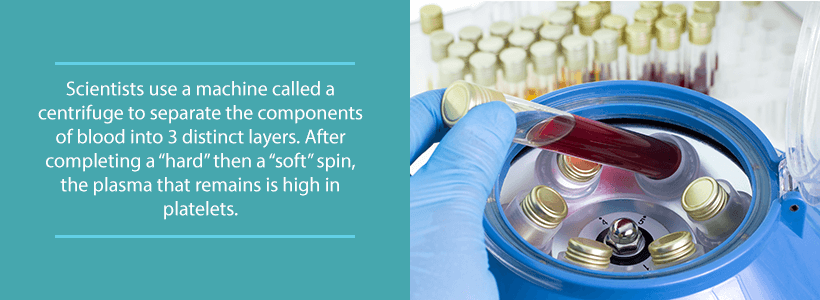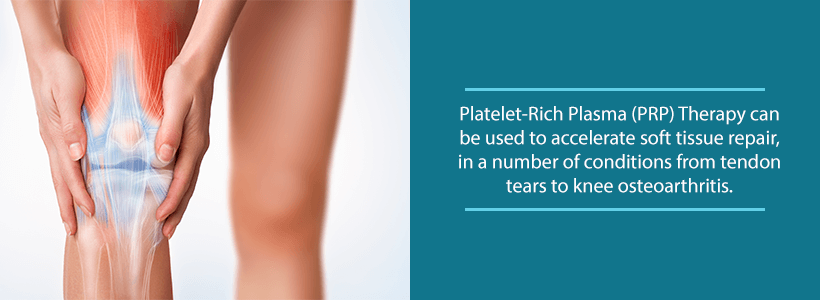What is Facet Nerve Ablation? Those who are seeking degenerative disc disease treatments have probably come across facet nerve ablation in their searches. But, is this an effective method of treating your degenerative disc disease…
Think back to your carefree days as a child. Remember when you fell at a park and scraped your knee? Within a week or two, the wound was only a distant memory. Your body, more specifically your blood, has intuitive healing powers to treat injuries and other conditions. By harnessing your body’s natural healing abilities, doctors and researchers are discovering new ways to speed up this process.
Platelet-Rich Plasma (PRP) Therapy has gained popularity as a relatively safe, cost-effective way to promote healing in the soft tissues and joints. Recently, professional athletes like Tiger Woods and pro football players have praised the healing effects of this procedure.
By using the healing factors in your own blood, doctors can create a concentrated injection that can assist with joint pain and other conditions. Use this guide to understand how your blood works and how it can be used to help you manage pain and stimulate healing.
Understanding Your Blood and Platelets
Your blood accounts for 7 to 8 percent of your body weight. Blood serves a vital role in your body’s functioning. It delivers oxygen and other nutrients to your organs and tissues. Blood also brings cells and antibodies to infected areas. In addition, it carries waste products to the kidneys and liver for filtering. Blood clotting prevents excessive blood loss for cuts and other injuries.
Blood Components
Your blood has four main components:
- Plasma: The liquid portion of blood, made of water, sugar, proteins, fat, and salts. Plasma transports other blood cells as well as nutrients, antibodies, hormones, and proteins throughout the body.
- Red Blood Cells: Accounting for up to 45 percent of the blood, these cells help carry oxygen to the body and return carbon dioxide to the lungs to be exhaled.
- White Blood Cells: These cells help the body to fight infection. Your blood consists of about 1 percent of these cells.
- Platelets: These fragments of cells help the blood to clot. They are also a natural source of the body’s growth factors.

Platelets and Growth Factors
The various growth factors stored in platelets serve a key role in wound healing and the body’s rebuilding process. PRP has seven different proteins. These include:
- Platelet-Derived Growth Factors: These activate cell membrane receptors which signal proteins to start certain functions such as healing.
- Vascular Endothelial Growth Factor: Aids in new blood vessel formation from existing blood vessels.
- Epidermal Growth Factor: Assists in stimulating cell growth and differentiation.
- Transforming Growth Factor: Allows cells to communicate and alter behavior in nearby cells.
- Adhesive Proteins: Vitronectin, fibronectin, and fibrin—allowing the cells to bind and the cell matrix to enable healing and other functions.
The interaction of these growth factors initiates and sustain different phases of tissue repair.
The premise of PRP therapy is that by adding more platelets to the blood’s plasma, one can speed up the healing process of soft tissues, bones, and joints.
How Does Platelet-Rich Plasma Therapy Work?
Doctors take a small amount of your blood—usually a teaspoon to a couple tablespoons. They put the blood in a machine called a centrifuge. This device spins the blood and separates it into three layers. The first spin, known as the hard spin, separates plasma that is low in platelets from the rest of the blood. The next “soft spin” separates plasma high in platelets from the red blood cells. The concentrated platelets in plasma are usually 5 to 10 times higher than normal blood.
The platelet-rich plasma is then prepared for injection. Using an ultrasound or x-ray guidance, the doctor then injects the PRP into the affected area. PRP may be injected into damaged tissues following a surgery to reduce scarring and promote soft tissue repair.
This relatively simple procedure usually takes about an hour. Depending on your condition, multiple injections of PRP may be advised.

Who Can PRP Therapy Help?
Platelet-Rich Plasma Therapy has been used to treat a variety of conditions. Here are some of the common conditions and situations in which PRP has shown some success:
- Acute Injuries: Athletes and others who suffered a recent injury to the muscles or ligaments. These could include a muscle strain or sprain such as a pulled hamstring.
- Tendon Injuries: The thick bands of soft tissue that connect the muscle to bone have shown some of the most success for PRP therapy. This includes those with tennis elbow, Achilles tendinitis, and rotator cuff tendinitis.
- Postsurgical Repair: When a tendon or ligament is so damaged it needs surgical repair, doctors may use PRP during surgery to speed up the healing process. In addition, PRP can decrease scar formation by healing the wound faster.
- Knee Arthritis: When the cartilage on the ends of bones starts to wear away, it creates a painful condition where joints lose their strength. This is especially true for the knees which tend to bear a lot of the body’s movements. A recent study found that treatment with platelet-rich plasma had significantly higher success in reducing pain and physical functioning than a placebo. Effects of this treatment usually lasted about six months.
- Bone Grafts: Sometimes a piece of bone is needed to fill the space to help other bones fuse together. Recent research indicates that incorporating PRP into a bone graft procedure can accelerate the healing process. The growth factors in platelets can improve graft adhesion and minimize movements allowing for a more successful bone graft.

What are the Side Effects of PRP Therapy?
Since you are using your own blood and its components, side effects, if any, are usually very mild. Some patients report pain at the injection site. In addition, as with any injection treatment, there is a risk of bleeding, infection, and nerve damage. These risks are rare.
Some may experience small amounts of pain after the procedure. However, it is important to avoid anti-inflammatory medications like Aleve or Motrin to treat this pain. These drugs may affect the healing process. If you feel like you need pain medication, Tylenol is a good option.
How Effective is PRP Therapy?
PRP Therapy is still considered an experimental therapy due to the relatively small amount of scientific data. The PRP centrifuge device, however, was approved by the Food and Drug Administration (FDA).
There are many cases of anecdotal evidence. For instance, the professional athletes who reported faster recovery times after injury. Scientific studies have shown data suggesting the beneficial effects of PRP in clinical procedures. Some of these studies, however, have a limited sample size, animal testing, or no controls.
Still, many doctors throughout the country are using platelet-rich plasma therapy will relative success. In an article published by Scientific American, a doctor stated about 60 percent of his patients showed favorable results.
Since PRP therapy and injections use the healing factors produced by your body, this is a relatively safe procedure you may want to ask your doctor about. As more studies are conducted, only time will tell how PRP therapy can become a common tool for treating muscle and bone issues.
Finding PRP Therapy Treatment
If you’re interested in discovering how PRP Injections can help your painful conditions, Orthopedic & Laser Spine Surgery is ready to help. We offer PRP injections for a variety of conditions.
By scheduling an appointment at Orthopedic & Laser Spine Surgery, you are assured a caring team of dedicated spine professionals ready to accurately diagnose and treat your symptoms. Using the latest research and technology, our expert doctors suggest the most appropriate, effective treatments for the neck, back, hip, and joint pain.

